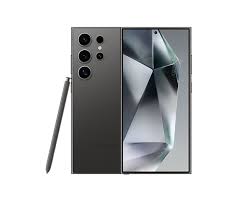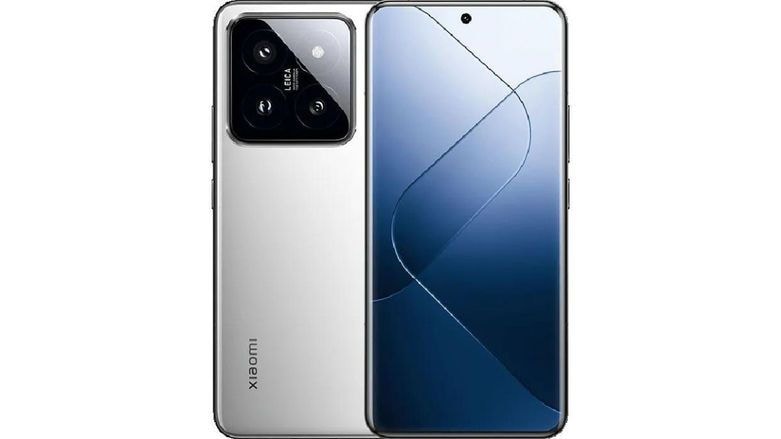Every year, creative minds look for the best slow-motion camera phone because they understand slow-motion is not only a cinematic effect. It has evolved into an essential function for content producers, videographers working professionally, and even inexperienced consumers. By capturing minute details while they are in motion, it is possible to add a touch of magic to commonplace occasions.
Within the scope of this post, we will investigate the best phones with slow-motion cameras that are currently accessible. Not only can you film high-action sports, but you can also record artistic moments with these instruments, which redefine what is possible. Now, let's take a look at the top competitors for the slow motion camera on smartphones.
In this article
Part 1.Best Smartphones with Slow Motion Camera Mode
Smartphone cameras have seen remarkable advancements, especially in slow-motion capabilities. The best smartphones with slow motion camera features now offer superior frame rates and high-definition quality. This is an essential aspect for content creators, videographers, and casual users alike. Whether you're capturing quick movements or artistic slow-motion shots, selecting the best slow motion mobile is important for high-quality videos, enhancing the overall mobile videography experience.
1. iPhone 15 Pro Max
The iPhone 15 Pro Max offers camera quality that is simply unmatched and precision engineering for slow-motion video, really standing out from the crowd. It shoots 4K at 120fps with seamless, high-quality smooth movements, further enhanced by robust stabilization. Its user-friendly interface and professional-level performance should meet the needs of both casual users and content creators alike, all while maintaining Apple's reputation for upgraded technology.

Camera Specs
- 48 MP main sensor
- 4K slow motion at 120 fps
- Advanced stabilization
Why It's Great
The A17 Pro chip powers the iPhone’s flawless video rendering, ensuring zero lag or dropped frames. Its ProRAW and ProRes capabilities allow for unparalleled post-production flexibility, making it an excellent choice for professionals.
Pricing
- Starting at $1,199
2. Samsung Galaxy S24 Ultra
The Samsung Galaxy S24 Ultra comes with an advanced 200 MP sensor that can even capture the minute details during slow motion. That precision and fluidity come from an impressive 1080p at 240fps, along with an AI-enhanced stabilization system. That powerful Exynos 2400 chip brings a sleek design to boost performance across all photography and videography applications.

Camera Specs
- 200 MP primary sensor
- 1080p slow motion at 240 fps
- Optical Zoom up to 10x
Why It's Great
Samsung's AI-driven stabilization eliminates blur, while the dynamic range ensures vibrant, detailed slow-motion footage. The versatile camera setup supports various creative angles for video enthusiasts.
Pricing
- Starting at $1,299
3.Google Pixel 9 Pro
The Google Pixel 9 Pro excels in computational photography, offering 4K slow motion at 120fps with enhanced HDR. Its Tensor G3 processor leverages AI to refine every frame, ensuring cinematic-quality results. A minimalist design paired with superior camera optimization makes it a top pick for smartphone photography enthusiasts.

Camera Specs
- 108 MP primary sensor
- 960 fps slow motion at 720p
- OIS for stability
Why It's Great
Google’s AI processing optimizes slow-motion shots with rich colors, sharp focus, and smooth transitions. It’s ideal for those who value simplicity without sacrificing quality.
Pricing
- Starting at $999
4. Xiaomi 15 pro
This is one budget powerhouse: the Xiaomi 15 Pro with 960 fps at 720p slow-motion support. With its 108 MP sensor and optical image stabilization, it also captures sharp, fluid videos. Xiaomi’s custom VPU enhances video rendering for precise details, making it an impressive contender in the mid-range market.

Camera Specs
- 108 MP primary sensor
- 960 fps slow motion at 720p
- OIS for stability
Why It's Great
Xiaomi delivers flagship-level slow-motion features at a competitive price. Its software integration enhances clarity and reduces noise in every shot.
Pricing
- Starting at $849
5.ViVo IQOO12
The ViVo IQOO12 combines powerful hardware with advanced software optimization, delivering 240fps slow motion in 1080p resolution. Its dual-lens setup ensures detailed shots, while AI-powered focus enhances every frame. With a Snapdragon 8 Gen 3 chipset, this phone ensures lag-free video capture and rendering.

Camera Specs
- 50 MP primary sensor
- 1080p slow motion at 240 fps
- Dual-lens setup for enhanced clarity
Why It's Great
Dynamic AI tools and a sleek interface make ViVo IQOO12 perfect for quick, creative, slow-motion shots. It’s tailored for users who seek affordability and performance.
Pricing
- Starting at $799
Part 2. How to Take High-Quality Slow Motion Video on Smartphone
Recording high-quality slow-motion films on your best slow-motion camera phone involves more than just pressing the record. To improve video quality, you must optimize settings, maintain stability, and use the proper filming approaches. Follow a few basic practices for capturing smooth, detailed slow-motion video to maximize your best phone with a slow-motion camera.
- Set the Frame Rate and Resolution Appropriately: Always use the highest frame rate your phone supports for ultra-smooth slow motion. Opt for 120 fps or higher for the best results.
- Use a Stable Setup: A tripod or gimbal can avoid shaky footage and ensure crisp, professional-looking shots.
- Record at the Right Distance: Balance proximity and perspective to ensure your subject remains in focus and well-lit.
- Fine-tune with Editing Software: Even the best footage can benefit from post-production adjustments. Apps like Wondershare Filmora provide tools for speed adjustments and visual enhancements.
Part 3. Edit Slow Motion Video Taken from Smartphone
If you did not enjoy the slow motion that you created, or if you could not afford to purchase an expensive, high-end slow motion video camera to obtain good quality, you can edit your slow motion video.
That's where Wondershare Filmora comes into play as a perfect solution. Filmora has a perfect array of powerful tools and features to enhance and perfect slow-motion videos, making them look professional-grade.
Why Choose Filmora for Editing Slow-Motion Videos?
A slow-motion video from your smartphone can be transformed into a polished cinematic creation with Filmora. Its speed ramping feature helps you create control over the playback speed in your footages while adding dynamic flair to your edits. With built-in presets like Montage, Hero Moment, and Bullet Time, Filmora makes common speed effects easily accessible, giving your videos a professional touch.
For more unique edits, Filmora lets you set keyframes along the timeline to define speed changes at specific points. This provides precise control over the pacing of your video. Additionally, Filmora ensures your audio remains smooth and natural by adjusting the speed without affecting the pitch. This means no more unwanted “chipmunk” effects or distorted sounds when speeding up or slowing down your clips.
Powerful AI video editor for all creators
How to Create Slow Motion Videos Using Filmora: A Step-by-Step Guide
Easily transform your ordinary videos into captivating slow-motion clips using Filmora. Follow this simple guide to apply the slow-motion effect and enhance your video, whether you're working with footage from an Android device or any other camera.
Step 1: Install Filmora on Your Computer
First, download and install Filmora on your Windows or Mac desktop. After installation, open the program by either signing in to an existing account or creating a new one.
Step 2: Start a New Project and Import Your Video
Create a new project within the app. Then, import your video file into the editor. Drag the video clip to the timeline for editing.

Step 3: Access Speed Ramping Tool
Click on the Speed icon located in the toolbar. From here, you can choose Speed Ramping. Alternatively, navigate to the Speed tab on the right panel and select Speed Ramping.

Step 4: Apply a Pre-set Speed Ramping Effect
Filmora offers several Speed Ramping presets that can be applied with just one click. These presets are ideal if you're looking for a quick, polished result. If you want a more customized look, proceed to the next step.

Step 5: Customize Your Slow-Motion Effect
For precise control over the slow-motion effect, click on Customize. Use the markers on the right panel to set the in and out points of the slow-motion section. Dragging the markers further down will slow the video more in that particular section.

Step 6: Preview and Fine-Tune Your Video
After applying the slow-motion effect, preview your clip to assess the changes. You can adjust the markers, speed, and ramping curves until you achieve the perfect effect.
Bonus Step: Enhance Your Slow Motion with Additional Techniques
Where the combination of motion blur and AI frame interpolation has the potential to add even smoother, more realistic slow-motion fluidity. While AI frame interpolation has that nice effect of enhancing the smoothness and frame rate of the footage of the slow-motion effect, motion blur adds a natural, fluid look to the final result.
Powerful AI video editor for all creators
🤩 Post You Might Be Interested In:
Conclusion
The best slow-motion camera phone offers a variety of features that can elevate your videography. These devices offer everything you need to capture breathtaking slow-motion footage, whether you're filming fast-paced sports or sensitive moments. The above-mentioned best smartphone slow-motion cameras combine high-quality sensors with powerful processing, making slow-motion accessible to everyone.
If you want to improve slow-motion videos, there is an editing software like Filmora that can process them using total precision. It supports editing functions for speed control and visual effects. With a combination of the right equipment and editing techniques, you can easily create professional slow-motion videos with ease.



 100% Security Verified | No Subscription Required | No Malware
100% Security Verified | No Subscription Required | No Malware


